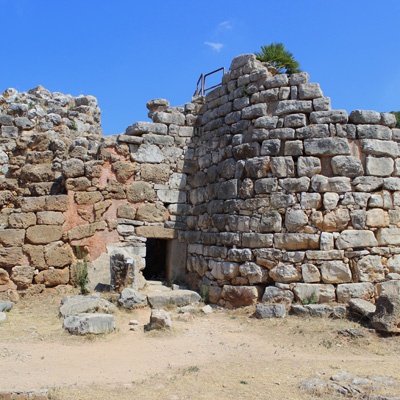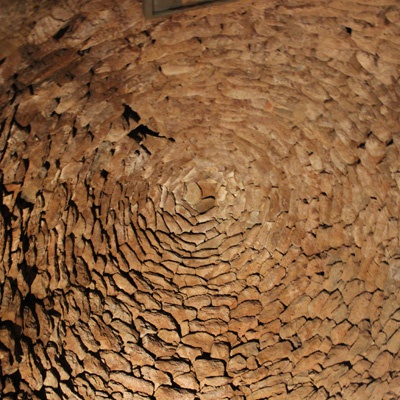




If it is true that there is life after death, an entire people is watching us from above and smiles. They are the nuraghic people from whom we inherited many prehistoric monuments (V - III millennium a.c.: the Domus de Janas, Dolmens and Menhirs) and nuragic monuments (1,800 a.c. to the second century a.c.: Nuraghi, tombsof the Giants', S Sacred Wells).
Among the monuments left by the various cultures in the Mediterranean, the numerous nuraghi scattered throughout the Island occupy a rilevant place. During the historical periods of the Bronze and Iron Age (1800 BC - 200 a. C.) there were built more than 7000 nuraghi and about 500 tombs of the giants: a great example of ingenuity and skill of the ancient Sardinian people. These constructions, wrapped in mystery, are part of the landscape of Sardinia, and have in fact become a symbol and emblem of an entire people.
Among the typical bronze sculptures of Sardinia (bronzetti - late Bronze Age and early Iron Age), representing heroes, worriors, gods, some ships where found. These bronzes, together with other nuragic archaeological findings found in the Continent, confirm that the Nuragic were a seafaring people and had established contact with other civilizations of the Mediterranean, with which they traded several goods such as bronze and its manufacts (found in Etruscan tombs), and mercenary warriors (Shardana or Sherden).
According to Egyptian sources of the second millennium a.c., the Sherden were part of the coalition of the Sea Peoples who, hired at first by the Pharaoh, later tried to invade the Kingdom of Egypt.
Much has been and is being written about the origins of Nuraghic culture. According to Sergio Frau, a journalist and author of the book "Le Colonne d'Ercole", the legendary columns may be identified not only by the Strait of Gibraltar, but also with the Strait of Sicily and, in this scenario, tinking about the legendary island of Atlantis, as mentioned by Plato in his dialogues Timaeus and Critias, one might even think of Sardinia. This theory, which has been confirmed by a number of upcoming scientists and archaeologists from around the world, it is still highly debated at the scientific level.
We do not yet know the purpose for which the Nuraghi were built, but admiring them closely we might be absorbed by the magic and the mistery that sorrounds them.
The duration of the excursion varies depending on your choice and level of interest on the subject, from half a day (up to 4 hours) to throughout the day (8 hours).
Hike + transfer service. The tour price does not include tickets to museums.